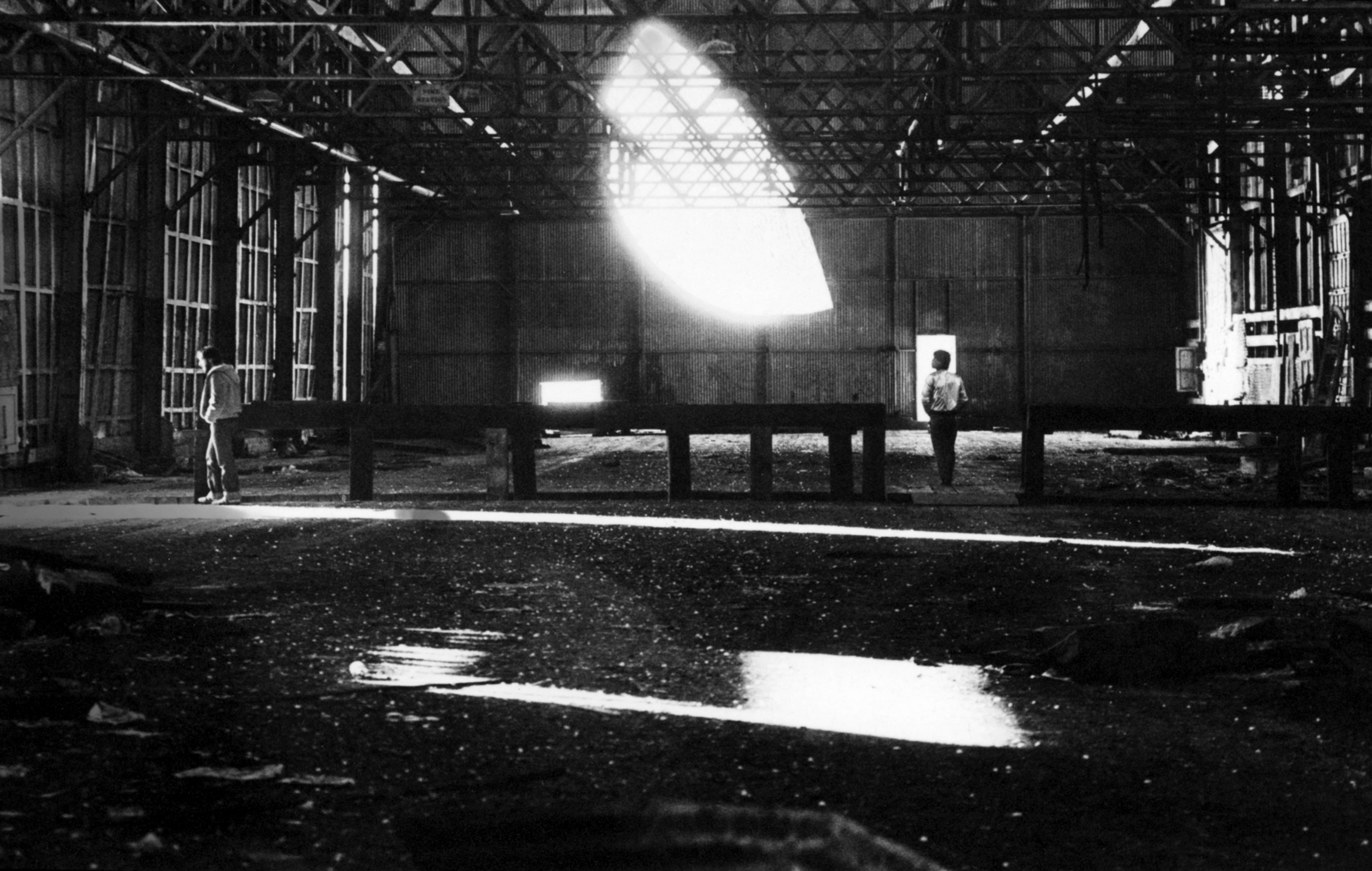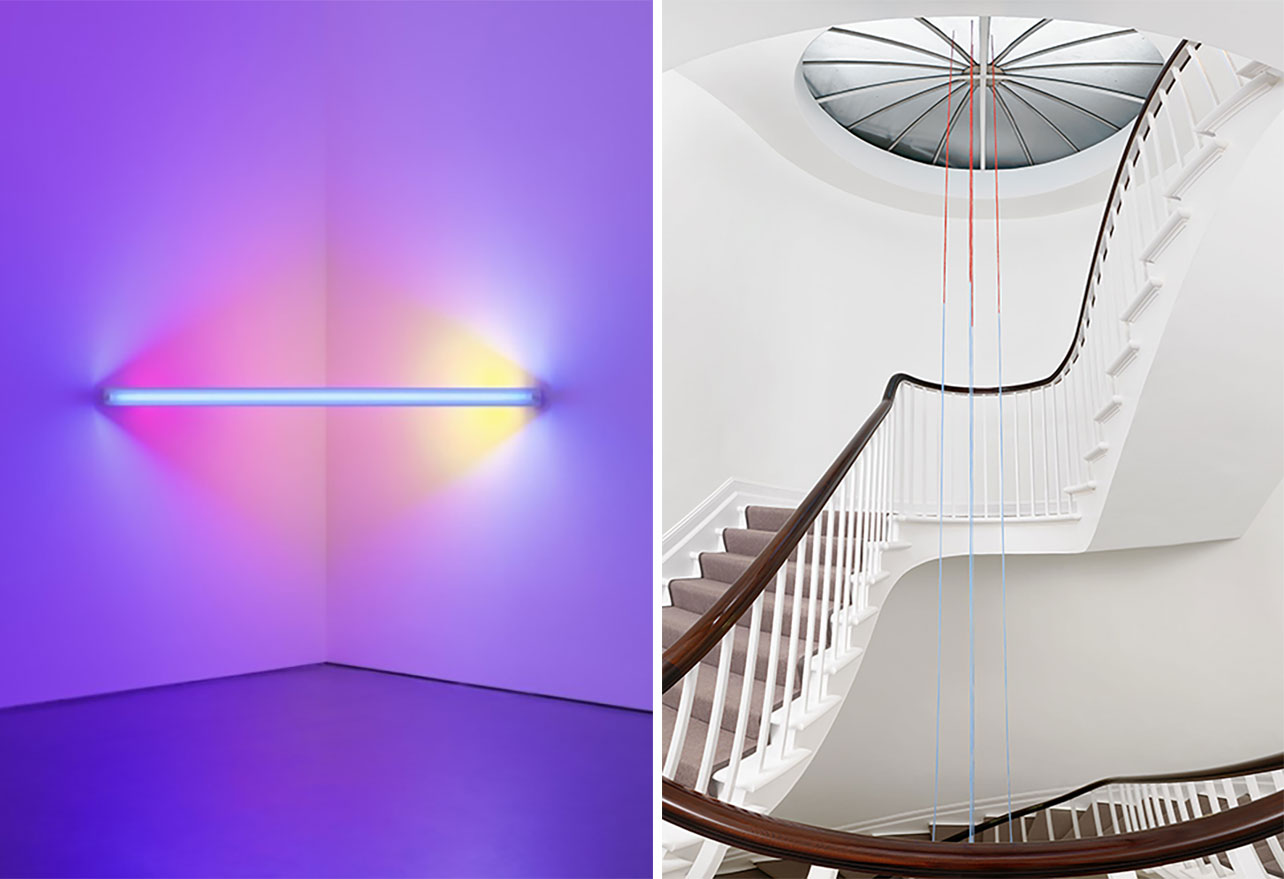ART CITIES:Hong Kong-Parallax
 The group exhibition “Parallax” takes its inspiration from the Chinese idiom 移步换形, which translates as “the view before you will transform with every step you take” suggesting an understanding of the experience of space as contingent and infinitely changing as one moves through it. A fundamental idea in Chinese garden design, the meaning of the term has been explored in literati travel memoirs and nature writings as well as in the traditions of landscape painting. The exhibition will feature immersive installations and video and film works by these five artists, all of which engage with this concept by highlighting and directly confronting how space is perceived and experienced by the viewer.
The group exhibition “Parallax” takes its inspiration from the Chinese idiom 移步换形, which translates as “the view before you will transform with every step you take” suggesting an understanding of the experience of space as contingent and infinitely changing as one moves through it. A fundamental idea in Chinese garden design, the meaning of the term has been explored in literati travel memoirs and nature writings as well as in the traditions of landscape painting. The exhibition will feature immersive installations and video and film works by these five artists, all of which engage with this concept by highlighting and directly confronting how space is perceived and experienced by the viewer.
By Efi Michalarou
Photo: David Zwirner Gallery Archive
The exhibition “Parallax” featurea immersive installations and video and film works by Francis Alÿs, Dan Flavin, Gordon Matta-Clark, Fred Sandback, and Diana Thater, all of which engage with this concept by highlighting and directly confronting how space is perceived Included in the exhibition is Diana Thater’s video wall “The Road to Hana Two” (2014) a work made up of nine monitors arranged in a grid that show unique, almost hypnotic depictions of the so-called rainbow eucalyptus trees lining the Hāna Highway in Maui, Hawaii. Famous for their colorful trunks, which reveal different bright hues as the bark sheds over the course of a year, they are one of the natural attractions on the scenic route that was originally built for sugar plantation workers and today is popular with tourists. Two layers of imagery were made using double-exposed 16mm film. The artist has described the work as “a kind of daydream”/ Slight movements of the camera, leaves flickering in the wind, or an insect moving in and out of view become distinguishable elements, while the predominantly red and green colors that make up the imagery correspond to the naturally occurring hues.
A central figure of the downtown New York art scene in the 1970s, Gordon Matta-Clark pioneered a radical approach to art making that directly engaged the urban environment and the communities within it. Through his many projects—including large-scale architectural interventions in which he physically cut through buildings slated for demolition—Matta-Clark developed a singular and prodigious oeuvre that critically examines the structures of the built environment. Presented here is Matta-Clark’s film “Day’s End” a piece that chronicles the artist’s architectural project by the same title from 1975. Seizing the opportunity to use the abandoned Pier 52 on Manhattan’s west-facing Hudson River waterfront for an elaborate cutting project, the artist and a small group of volunteers staged this structural intervention, cutting large holes in the corrugated-steel fabric of the immense building. Piercing the previously enclosed space with light, Matta-Clark’s cuts turned the pier into a cathedral-like space in which inside and outside were put in tension with one another. More than merely documenting the process of the cuts, the film reveals how light and space functioned as Matta-Clark’s media. As the cuts open the dark interior of the pier to the outside world, the film becomes imprinted with radiant bright lines, a filmic pictogram that creates a permanent record of Matta-Clark’s ephemeral event.
Francis Alÿs’s video work “The Nightwatch” (2004) iso be included in the show. Known for his in-depth projects in a wide range of media, Alÿs consistently directs his distinct poetic and imaginative sensibility toward anthropological and geopolitical concerns centered around observations of, and engagements with, everyday life. The artist himself has described his work as “a sort of discursive argument composed of episodes, metaphors, or parables”. For “The Nightwatch” Alÿs released a fox into London’s National Portrait Gallery and used security cameras to film the inquisitive animal’s journey through the museum, resulting in the content of the video and the viewer’s experience of the spaces being determined entirely by the fox’s curiosity and impulses. The work is part of the artist’s “Seven Walks” a series of actions (commissioned by Artangel in 2004–2005) that explore the urban environment of London through the artist’s own wanderings as well as those enacted on his behalf by others.
Paired with these film and video works are installations by Dan Flavin and Fred Sandback that directly intervene in the viewer’s experience of the Hong Kong gallery spaces. Composed of each artist’s signature media of fluorescent light and acrylic yarn, respectively, the works establish unique and ever-changing encounters for visitors as they move through the galleries. Over the course of three decades, Sandback developed a singular, Minimal formal vocabulary that elaborates on the phenomenological experience of space and volume with unwavering consistency and ingenuity. On view are two exemplary vertical sculptures by Sandback. His “Untitled (Four-part Vertical Construction)” (1987) comprises three lengths of off-white acrylic yarn and one length of black acrylic yarn that are stretched between the floor and ceiling. “Untitled (Sculptural Study, Sixteen-part Vertical Construction)” (1987/2000) is made up of sixteen lengths of acrylic yarn, five in red, five in blue, and six in yellow, that are likewise stretched vertically from floor to ceiling and installed on an axis between two diagonally opposite corners of the gallery space. Though occupying space differently, each sculpture affects a kind of perspectival shift that alters the viewer’s experience of the work as they move through the room. These works epitomize the artist’s radical break from traditional conceptions of sculpture as a static object with a fixed volume, and represent an experiential notion of open form that engages what Sandback called the “pedestrian space” of everyday life.
From 1963, when Dan Flavin conceived the “diagonal of May 25, 1963 (to Constantin Brancusi)” a single gold, fluorescent lamp installed on a diagonal on the wall—a work which marks the artist’s first use of fluorescent light alone—until his death in 1996, Flavin produced a singularly consistent and prodigious body of work that utilized commercially available fluorescent lamps to create installations (or “situations,” as he preferred to call them) of light and color. Through these light constructions, Flavin was able to literally establish and redefine space. The work “untitled (to Virginia Dwan)” (1971) dedicated to the famed gallerist who helped promote Flavin and other avant-garde artists from the 1960s and 1970s, is composed of three lamps of yellow, pink, and red (from left to right) aligned tangentially, facing into the corner of a room and mounted on the back of an 244 cm blue lamp facing out. Exemplifying the artist’s practice, the work creates an immersive experience of light and space that constantly changes as one moves through it.
Info: David Zwirner Gallery, 5-6/F, H Queen’s, 80 Queen’s Road Central, Hong Kong, Duration: 30/6-31/7/20, Days & Hours: Tue-Sat 11:00-19:00, www.davidzwirner.com


Right: Fred Sandback, Untitled (Four-part Vertical Construction), 1988, Light blue and red-brown acrylic yarn, Situational: spatial relationships established by the artist; overall dimensions vary with each installation, Courtesy David Zwirner Gallery
Francis Alÿs, The Nightwatch, London, 2004, 6:17min, © & Courtesy the artist http://francisalys.com
